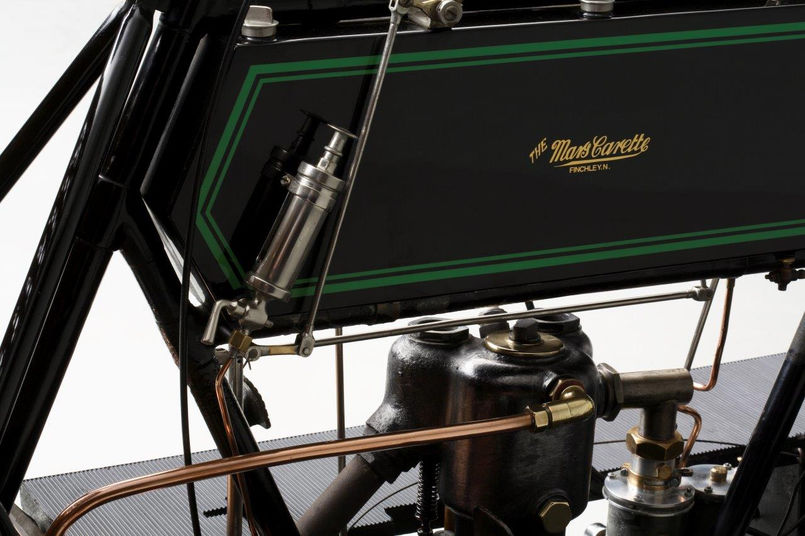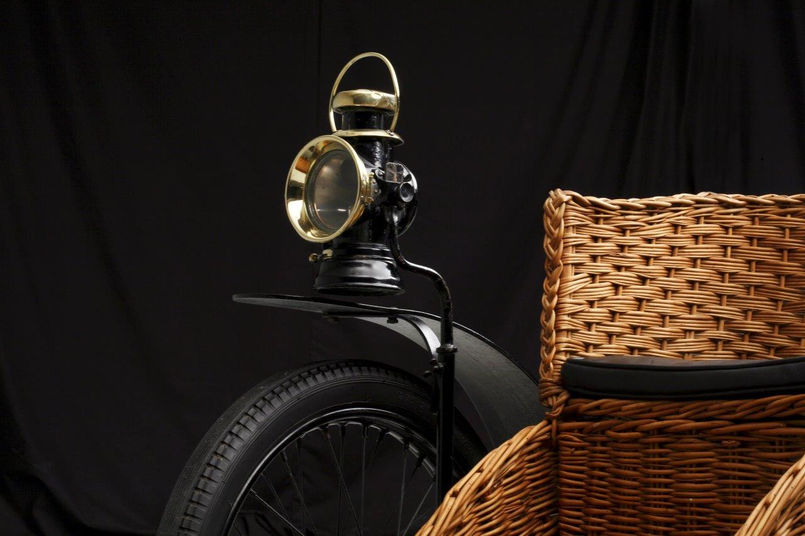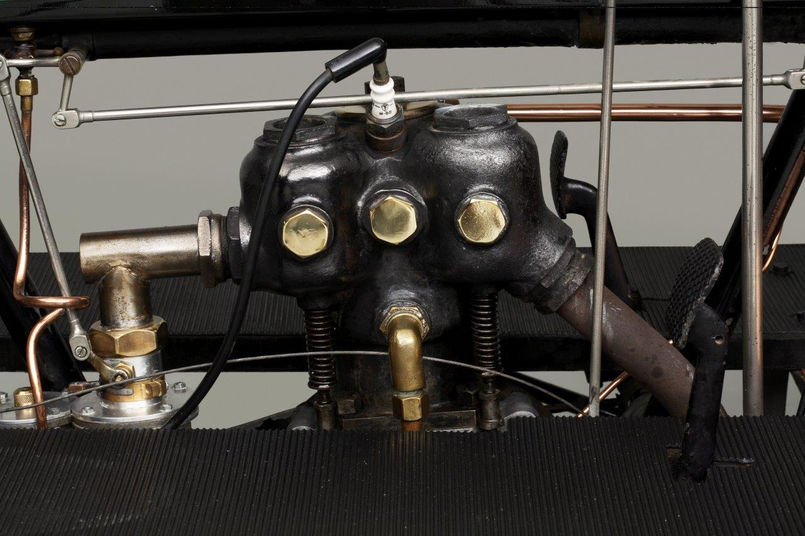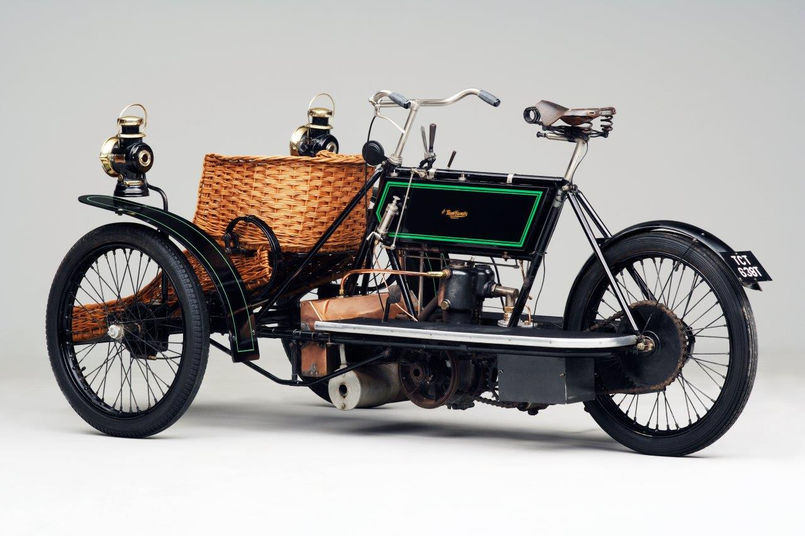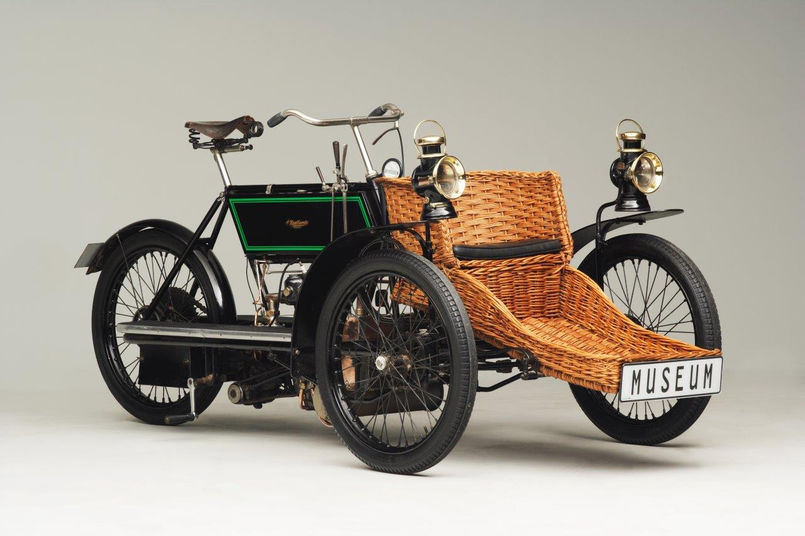
29 Nov On yer bike: 1904/5 Mars-Carette
FMM Curator Wayne Harley goes to Mars on a trike…
This month we take a look at what must be one of the rarest vehicles in the FMM collection – our 1904/5 Mars-Carette. I say this as I’ve never come across another example since I’ve been involved at the museum, be that in person, in publications or even on the web. Very little has been written on these rear ‘Forecar-type’ tricycles, and basically only states that they were produced between 1904 and 1905 by the Mars Motor Company at Finchley, London and should not be confused with Germany’s Mars-Werke AG that operated around the same time. This trike was Mars’ only model and was known as the Carette, a simple two-passenger vehicle where the passenger sat in front of the rider – ‘operator’ – in an exquisite wicker chaise-lounge type seat while the rider sits behind in a typical upright cyclist position.
What is interesting is that the Carette is fitted with a White & Poppe total loss four-stroke petrol engine. The history behind these power plants is story all on its own. White & Poppe in Coventry, England, was founded by two friends, Alfred White and Peter August Poppe, who were proprietary engine and gearbox manufacturers. The company was registered in 1899 and even produced arms and munitions during the second Anglo-Boer war. They later became famous for their involvement with commercial vehicle manufacturers Dennis Brothers, who used White & Poppe engines in their vehicles and who, in 1919, bought out the engine maker.
But I digress. So just how does this Mars-Carette perform and what kind of drive or ride could a person expect? Now I must be totally honest here as this example hasn’t run for some years; I last rode on it back in 2008 and at the Heidelberg Museum, and that hair-raising experience is not something one can easily forget! And this is not because of the unmanageable performance, but more a case of needing four hands and both feet almost all the time just to get this tricycle to go in one direction. I’m going to start by saying the side-valve, water-cooled engine is claimed to produce 4 horsepower (3 kW), but these feel more like four Shetland ponies, which makes just moving along almost as difficult as pushing the Carette around with flat tyres…
Once you have expended almost every last breath you have in your body crank-starting the motor and trying to stir those ponies into life, you can finally mount this tricycle and hope to high heaven it doesn’t stall forcing you to start all over again.
After advancing the spark timing with a lever mounted on the left-hand side of the crossbar just above the fuel tank, depress the clutch pedal on the left running board, before selecting first gear with the tank-mounted gear lever just ahead of the spark advance lever. With your right hand you up the revs with the throttle lever, which is mounted to the right of the spark advance. And you do need to get everything pointed in the same direction before you release the clutch. While your hands are busy getting the revs up, sorting the spark advance and selecting first gear, you have to hold on to the handlebars while steering with that extra set of hands I spoke about. I hope you are still following me. It takes a lot to get this contraption moving…
Steering is achieved with the aid of standard classic bicycle handlebars and a very basic tie-rod system that is very direct and with no consideration for caster or camber in the front steering geometry. Control is horrible, almost backyard box-cart type handling. It’s at this point you become very grateful there are only four horses and two gears, as top speed cannot be more than 30-35 km/h. To bring this machine to a standstill you need to use all the brakes you have on board, which are totally inadequate even at a very low speed The front 4-inch drum cable brakes are activated with a lever on the left-hand side of the handlebar, but are so basic it’s almost impossible to balance them so expect to veer off left or right. The rear 4-inch bow brake is applied via the pedal on the right-hand side of the running board at the same time in the vain hope it might just help. At this point you should be remembering to throttle back but only enough so as not to stall then you need to depress the clutch, select neutral or first gear with the same hand that you have just used to throttle back. Oh, and please remember to keep steering!
On top of all this fettling while riding, it must be remembered the engine is a total loss design, which means the rider also needs to control the oil flow to the engine by means of the hand-operated plunger pump also mounted to the side of the tank.
The Mars-Carette is by no means the most comfortable machine ever made. A simple Brooks leather bicycle seat is all you have in the line of so-called comfort. The pipe steel frame is totally rigid and with no suspension at all, the ride is bone-jarringly harsh. Then the cherry on the cake must be the brass radiator at your feet; this is an open system so, as the vehicle gets hot, if no cooling air can pass through the radiator at low speeds, the water tends to boil. And without the luxury of any suspension, water starts spurting and splashing out of the small copper spout on the radiator directly onto the rider’s leg. All of which simply adds to the experience of riding this Mars-Carrete. It is easy to see why it was not a great success and was only in production for two years.
